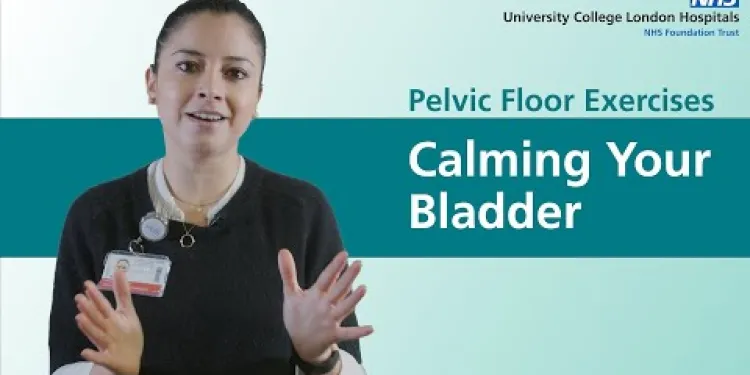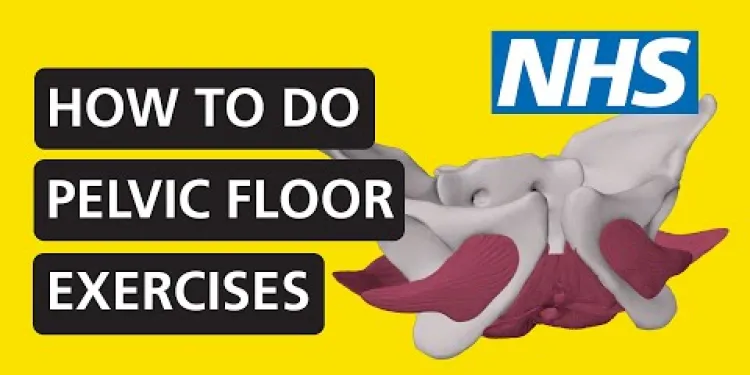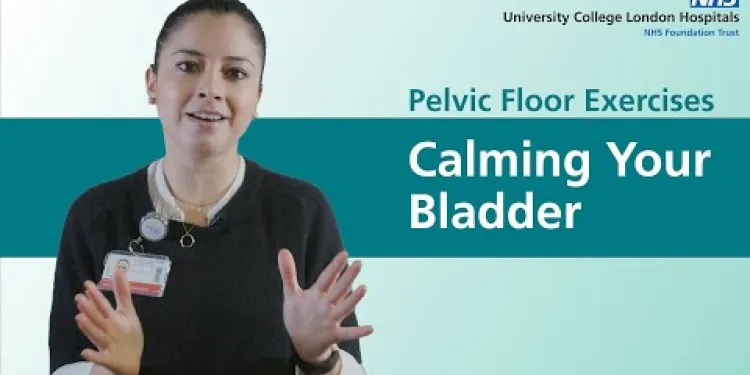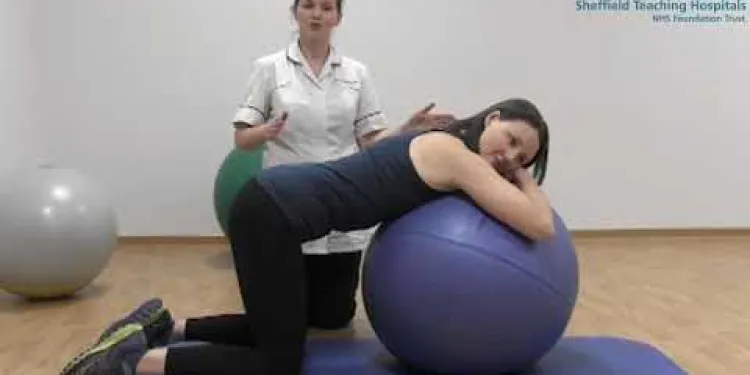Find Help
More Items From Ergsy search
-

Pelvic health: prolapse
Relevance: 100%
-

Pelvic health: prolapse
Relevance: 99%
-

Prolapse Management
Relevance: 67%
-

Prolapse Types and Tips
Relevance: 65%
-

Incontinence and Prolapse - Physiotherapy Advice
Relevance: 62%
-

Incontinence and Prolapse - Physiotherapy Advice
Relevance: 62%
-

Your pelvic health matters: insights from NHS clinicians
Relevance: 61%
-

Pelvic health: Urge Incontinence
Relevance: 45%
-

Pelvic Floor Exercises - Using Your Pelvic Floor to Calm Down Your Bladder
Relevance: 45%
-

The Pelvic Floor Muscles - Developing an Exercise Programme
Relevance: 44%
-

Pelvic health: stress urinary incontinence
Relevance: 44%
-

How to do pelvic floor exercises | NHS
Relevance: 43%
-

Pelvic Floor Exercises - Using Your Pelvic Floor to Calm Down Your Bladder
Relevance: 41%
-

Understanding Your Sexual Health - Pelvic Inflammatory Disease
Relevance: 40%
-

BSL Pelvic inflammatory disease (PID)
Relevance: 33%
-

Pelvic Girdle Pain Advice Class
Relevance: 33%
-

Mat and gym ball exercises with pregnancy related Pelvic Girdle Pain
Relevance: 28%
-

Understanding Your Sexual Health - Gonorrhoea
Relevance: 20%
-

Health and safety responsibilities
Relevance: 18%
-

Harshi’s learning disability annual health check and health action plan
Relevance: 17%
-

Understanding Mental Health in Children
Relevance: 16%
-

Mental Health Support Resources in the UK
Relevance: 16%
-

Mental Health Support Services in the UK
Relevance: 16%
-

Mental Health Resources for Families
Relevance: 16%
-

What is a public health funeral?
Relevance: 16%
-

Postpartum Health: Mother and Baby
Relevance: 16%
-

Health Officials Warn Against 'DIY' Health Remedies Amid Supply Chain Issues
Relevance: 16%
-

Accessing Mental Health Support Resources in the UK
Relevance: 16%
-

Advancements in Mental Health Resources for Families
Relevance: 16%
-

What is the impact of obesity on mental health?
Relevance: 15%
-

Mental Health Support Resources for Families
Relevance: 15%
-

Mental Health: Laura's Story | NHS
Relevance: 15%
-

Is Wegovy covered by health insurance?
Relevance: 15%
-

How are health services provided in prison?
Relevance: 15%
-

What health risks are associated with obesity?
Relevance: 15%
-

Mental Health Support for Families: Resources and Strategies
Relevance: 15%
-

Current Challenges in Youth Mental Health Services
Relevance: 15%
-

Mental Health Support for Families: Resources and Helplines
Relevance: 15%
-

What mental health resources are available for seniors?
Relevance: 15%
-

THE LAW IN 60 SECONDS | HEALTH AND SAFETY AT WORK
Relevance: 15%
Understanding Pelvic Health: Prolapse
What is Pelvic Organ Prolapse?
Pelvic Organ Prolapse (POP) is a condition where one or more of the organs in the pelvic region—such as the bladder, uterus, vagina, small bowel, or rectum—slip down from their normal position and press against the walls of the vagina. This often happens due to weakened or stretched pelvic floor muscles and ligaments. POP can significantly affect the quality of life and is most common among women who have experienced childbirth, menopause, or significant physical activities that strain the pelvic floor.Causes of Pelvic Organ Prolapse
Several factors can contribute to the development of pelvic organ prolapse. Some of the main causes include: - **Childbirth:** Vaginal delivery, particularly those with complications, can weaken the pelvic muscles. - **Ageing and Menopause:** Reduced levels of estrogen post-menopause can lead to weakened pelvic floor support. - **Heavy Lifting:** Consistently lifting heavy objects can place undue stress on the pelvic region. - **Chronic Conditions:** Persistent coughing or constipation can also add pressure on the pelvic organs.Symptoms of Pelvic Organ Prolapse
The symptoms of POP can vary depending on the severity and type of prolapse. Common symptoms include: - A feeling of heaviness or pressure in the pelvis. - A visible bulge in the vagina. - Difficulty starting to urinate, frequent urination, or urinary incontinence. - Discomfort during intercourse. - Lower back pain. - In more severe cases, organs can protrude out of the vaginal opening, necessitating urgent medical attention.Treatment Options
Treatment for pelvic organ prolapse depends on the severity of the condition and the symptoms presented: - **Lifestyle Changes:** Reducing heavy lifting, managing chronic coughs and constipation, and maintaining a healthy weight can alleviate symptoms. - **Pelvic Floor Exercises:** Kegel exercises can strengthen the pelvic muscles and provide support for the organs. - **Pessary Devices:** A pessary is a removable device inserted into the vagina to support areas affected by prolapse. - **Surgery:** In cases where conservative treatments are ineffective, surgical options may be considered to repair the prolapsed organs and provide long-term relief.Living with Pelvic Organ Prolapse
Living with pelvic organ prolapse can be challenging, but many women find relief with the right treatment plan. Regular check-ups with healthcare providers, practising pelvic floor exercises, and adopting a healthy lifestyle are crucial for managing symptoms and preventing the condition from worsening. Women in the United Kingdom experiencing symptoms of prolapse are encouraged to consult with their GP or a specialist to explore their options.Support and Resources in the UK
In the UK, several organisations provide support and resources for women dealing with pelvic organ prolapse. These include: - **NHS England:** The National Health Service offers comprehensive information and treatment options for prolapse. - **The Pelvic Floor Society:** A professional society focusing on pelvic floor disorders, offering guidance and professional support. - **Support Groups:** Online and in-person support groups can provide emotional support and shared experiences from other women with similar conditions. - **Physiotherapists:** Specialised pelvic health physiotherapists can help with tailored exercise programs. By staying informed and seeking the right care, women in the UK can successfully manage and improve their pelvic health when facing prolapse.Understanding Pelvic Health: Prolapse
What is Pelvic Organ Prolapse?
Pelvic Organ Prolapse (POP) happens when organs in the pelvis, like the bladder or uterus, move from their usual place and push against the walls of the vagina. This occurs when the muscles that hold these organs are weak or stretched. It can affect daily life and is common in women who have had babies, are older, or have lifted heavy things.Causes of Pelvic Organ Prolapse
Several things can cause pelvic organ prolapse: - **Having Babies:** Giving birth, especially with some problems, can weaken the muscles. - **Getting Older and Menopause:** Lower levels of estrogen after menopause can make muscles weaker. - **Lifting Heavy Things:** Doing this a lot can put strain on the pelvic area. - **Long-lasting Health Issues:** Problems like constant coughing or hard stools put pressure on pelvic organs.Symptoms of Pelvic Organ Prolapse
Symptoms of POP can differ, but common ones include: - Feeling heavy or like there is pressure in your pelvis. - A bulge in the vagina. - Trouble starting to pee, peeing often, or leaking pee. - Pain during sex. - Pain in the lower back. - In serious cases, organs may come out of the vagina, needing quick medical help.Treatment Options
Treatment depends on how bad the prolapse is and what symptoms you have: - **Changes in Lifestyle:** Avoid lifting heavy things, manage coughs and constipation, and keep a healthy weight to ease symptoms. - **Pelvic Floor Exercises:** Kegel exercises can make pelvic muscles stronger. - **Pessary Devices:** A pessary is a device placed in the vagina to help support organs. - **Surgery:** If other treatments don't work, surgery can fix the prolapse for long-term relief.Living with Pelvic Organ Prolapse
Living with POP can be hard, but many women feel better with the right treatment. Regular doctor visits, doing pelvic exercises, and having a healthy lifestyle help manage symptoms. Women in the UK with prolapse should talk to their GP or a specialist.Support and Resources in the UK
In the UK, there are places for help and information on pelvic organ prolapse: - **NHS England:** Offers details and treatment options for prolapse. - **The Pelvic Floor Society:** Gives advice and help for pelvic floor issues. - **Support Groups:** In-person and online groups offer emotional help and stories from other women. - **Physiotherapists:** Experts in pelvic health to help with special exercises. By learning about prolapse and getting the right care, women in the UK can manage and improve their pelvic health.Frequently Asked Questions
What is pelvic organ prolapse?
Pelvic organ prolapse occurs when one or more of the pelvic organs drop from their normal position and bulge into the vagina due to weakened pelvic floor muscles and tissues.
What are the symptoms of pelvic organ prolapse?
Common symptoms include a feeling of pressure or fullness in the pelvic area, a bulge in the vagina, urinary incontinence, bowel issues, and discomfort during sexual intercourse.
What causes pelvic organ prolapse?
Causes can include childbirth, ageing, obesity, chronic coughing, heavy lifting, and genetic predisposition. Anything that puts pressure on the pelvic floor can contribute to prolapse.
How is pelvic organ prolapse diagnosed?
A GP will typically perform a pelvic examination and may refer you to a specialist for further assessment. In some cases, imaging studies like MRI or ultrasound may be used.
Can pelvic organ prolapse be prevented?
While it may not always be preventable, maintaining a healthy weight, practising pelvic floor exercises (Kegels), avoiding heavy lifting, and managing conditions that cause chronic coughing can help reduce the risk.
What are the treatment options for pelvic organ prolapse?
Treatment can range from lifestyle changes and pelvic floor exercises to medical devices like pessaries and surgical options. The best treatment depends on the severity and type of prolapse.
What is a pessary?
A pessary is a medical device inserted into the vagina to support the pelvic organs and manage symptoms of prolapse. It is often used as a non-surgical treatment option.
What types of surgery are available for pelvic organ prolapse?
Surgical options include anterior or posterior repair, uterine suspension, or hysterectomy. The choice of surgery depends on the type and severity of the prolapse and patient preference.
Can pelvic organ prolapse recur after treatment?
Yes, recurrence is possible, especially if underlying risk factors are not addressed. Regular follow-up with healthcare providers and ongoing pelvic floor exercises can help minimise recurrence.
Are there non-surgical treatments for pelvic organ prolapse?
Yes, non-surgical treatments include lifestyle changes, pelvic floor exercises, use of vaginal pessaries, and physical therapy. These treatments aim to manage symptoms and improve pelvic floor strength.
Is pelvic organ prolapse common?
Yes, it is quite common, particularly among older women and those who have given birth. However, it can affect women of all ages.
Is it safe to exercise with pelvic organ prolapse?
Yes, but it's important to focus on exercises that strengthen the pelvic floor and avoid high-impact activities that put additional strain on the pelvic area. Consult your healthcare provider for tailored recommendations.
What are the complications of untreated pelvic organ prolapse?
Complications can include increased discomfort, urinary incontinence, bowel issues, and a negative impact on sexual function and quality of life. Severe cases may require more complex surgical intervention.
Can men experience pelvic organ prolapse?
Pelvic organ prolapse primarily affects women because of the structure of female pelvic anatomy. However, men can experience issues with pelvic floor weakness leading to other conditions, such as rectal prolapse.
How effective are pelvic floor exercises in treating pelvic organ prolapse?
Pelvic floor exercises can be very effective, especially for mild to moderate prolapse. They help strengthen the pelvic muscles, which can provide better support for pelvic organs and reduce symptoms.
What is pelvic organ prolapse?
Pelvic organ prolapse is when organs in the lower part of your body, like the bladder or bowel, move down from where they should be. This can happen if the muscles around them get weak.
It might feel like a heavy feeling or a bulge. Sometimes, it can be uncomfortable.
If you think you have this problem, it's a good idea to talk to a doctor.
Using pictures or diagrams can help you understand better. You can also ask someone to read this with you.
Pelvic organ prolapse happens when organs in the pelvis, like the bladder or womb, move down from where they should be. They can push into the vagina because the muscles and tissues in the pelvis are weak.
What happens if pelvic organs move down?
Pelvic organs can sometimes move down. Here is what you might feel:
- A heavy or full feeling in your lower tummy.
- Something is dropping or bulging in your pelvic area.
- Problems peeing, like leaks or not emptying fully.
- Lower back pain.
- Finding it hard to sit or stand for a long time.
If you feel these things, talk to a doctor or nurse. They can help.
Signs of a problem can be:
- Feeling pressure or heaviness low down in your belly.
- A lump or bulge in your private area.
- Leaking pee when you don't mean to.
- Poop problems.
- Pain during sex.
Tips to Make Things Easier:
- Try to talk with someone you trust about how you feel.
- Use simple tools like reminder notes or apps to keep track of your symptoms.
- Practice deep breathing to help when you feel uncomfortable.
What makes pelvic organ prolapse happen?
Prolapse can happen for different reasons. Some causes are having a baby, getting older, being overweight, coughing a lot, lifting heavy things, and family history. These things put pressure on the pelvic floor.
Here are some things that can help:
- Breathe deeply to relax.
- Ask others for help when lifting heavy things.
- Talk to a doctor if you have lots of coughing.
How do doctors find out if someone has pelvic organ prolapse?
Doctors check to see if someone has pelvic organ prolapse by asking questions and doing a gentle check-up. They might ask about symptoms like feeling pressure in the belly or having trouble going to the bathroom.
Sometimes, doctors use special tools or machines to see inside the body. This helps them know if the organs are in the right place.
If you need help understanding medical information, you can ask a family member or a friend to come with you to the doctor. Also, using pictures or videos can make it easier to understand.
A doctor will usually check your tummy and may send you to see another doctor who knows a lot about this. Sometimes, they might need to take pictures of the inside of your body using special machines like MRI or ultrasound.
Can we stop pelvic organ prolapse from happening?
We can try to stop pelvic organ prolapse. Here are some tips:
- Do exercises called Kegels to make your muscles strong.
- Eat healthy foods to help you stay at a good weight.
- Try not to lift heavy things a lot.
- If you smoke, try to stop.
- See a doctor for help and advice.
Pictures or videos can also help explain.
Sometimes, you can't stop it from happening. But there are things you can do to help:
- Keep a healthy weight.
- Do exercises called Kegels to make your pelvic floor muscles stronger.
- Try not to lift heavy things.
- Take care of any health problems that make you cough a lot.
These tips can help lower the risk.
What can help if organs in the pelvis move out of place?
If organs in the pelvis move, there are ways to help. Here are some things that can be done:
- Exercise: Doing special exercises, like squeezing the muscles in the bottom (called Kegel exercises), can make the muscles stronger.
- Doctors and Nurses: They can help by giving advice or special care.
- Equipment: Sometimes, a small device can be put inside to help hold organs in the right place.
- Operation: In some cases, a doctor can do surgery to fix the problem.
It is important to talk to a doctor to find the best help for you. Friends, family, or special helpers who know about this can give support too.
Treatment can involve changing how you live, doing special exercises, using medical tools like pessaries, or having surgery. The best treatment will depend on how bad the problem is and what type it is.
What is a pessary?
A pessary is a small, soft thing you put inside your body. It can help if you have problems like needing support for body parts inside. It sometimes helps with feeling more comfortable or stopping pee from leaking.
If you find it hard to understand, ask someone you trust for help. Using pictures or a video to see how it works can be useful too.
A pessary is a small device that a doctor puts inside the vagina. It helps keep the organs in place and makes you feel better if they move too much. You don't need surgery to use a pessary.
What kinds of surgery can help with a pelvic organ prolapse?
Pelvic organ prolapse is when organs in the belly, like the bladder, move out of place.
There are different surgeries to help fix this. Here are some kinds:
- Repair surgery: This surgery puts the organs back in the right place and is done through the vagina or belly.
- Mesh surgery: A special net called mesh is used to help keep organs in place.
- Uterine surgery: If the uterus is causing problems, doctors might remove it.
Before surgery, it's good to talk to a doctor about choices. Pictures or videos can help understand what will happen. Talking to someone who had the surgery can also help.
Doctors can do different kinds of surgeries to help. They can fix the front or the back, lift the womb, or take out the womb. The doctor will pick the best surgery for you. It depends on what kind of problem you have and what you want.
Can pelvic organ prolapse happen again after treatment?
Pelvic organ prolapse is when organs like the bladder or uterus move down. It can be fixed with treatment, like surgery or exercises.
Sometimes, pelvic organ prolapse can happen again, even after treatment. This means the organs move down again.
To help stop this from happening, people can:
- Do special exercises, like pelvic floor exercises. These help make the muscles strong.
- Go to regular check-ups with the doctor.
- Talk to a doctor or nurse if they notice any changes.
It is important to follow the doctor's advice and keep the muscles strong. This can help stop the prolapse from coming back.
Yes, it can happen again, especially if the things that cause it are not fixed. Going to the doctor regularly and doing exercises for the pelvic floor can help stop it from happening again.
Can pelvic organ prolapse be treated without surgery?
Yes, there are ways to help pelvic organ prolapse without surgery. These include:
- Exercises: Doing special exercises called Kegels can make your muscles stronger. This can help support your organs.
- Pessaries: A doctor can give you a small device called a pessary. This goes inside your body to help hold up your organs.
- Healthy Habits: Eating well, staying at a healthy weight, and not lifting heavy things can also help.
If you want to know more, talk to your doctor. They can tell you what might work best for you.
Yes, you can try treatments that do not need surgery. These include changing how you live, doing special exercises for your pelvic area, using a device called a vaginal pessary, and doing physical therapy. These treatments help make you feel better and make your pelvic muscles stronger.
Is it common for pelvic organs to drop down?
Pelvic organs can drop. This is called prolapse. It is common, especially in women who have had babies. Some things that might help are: - Doing pelvic exercises. - Talking to a doctor. - Using special support garments.Yes, this happens a lot. It mostly happens to older women and moms who have had babies. But, it can happen to any woman, no matter how old they are.
Can I exercise if I have pelvic organ prolapse?
Yes, you can, but it's important to do exercises that make your tummy and back stronger. Stay away from exercises that are hard on your body. Talk to your doctor to find out what's best for you.
What happens if pelvic organ prolapse is not treated?
Sometimes there are problems that can make you feel more pain. You might have trouble holding pee or poop, and it could make sex and daily life harder. If it gets really bad, you might need a big surgery.
Can men have pelvic organ prolapse?
Pelvic organ prolapse mainly happens to women because of how their bodies are built. But men can have weak pelvic floors too, which can cause different problems like rectal prolapse.
If you need help reading, you can use tools like audiobooks or text-to-speech apps. These can read the words out loud for you. Talking to a teacher or a friend can also help you understand better.
Do pelvic floor exercises help if organs in the body are not staying in place?
Doing exercises for your pelvic floor can really help, especially if the problem isn't too bad. These exercises make your pelvic muscles stronger. When your muscles are strong, they can hold up your organs better and make you feel better.
Useful Links
- Ergsy carfully checks the information in the videos we provide here.
- Videos shown by Youtube after a video has completed, have NOT been reviewed by ERGSY.
- To view, click the arrow in centre of video.
- Most of the videos you find here will have subtitles and/or closed captions available.
- You may need to turn these on, and choose your preferred language.
- Go to the video you'd like to watch.
- If closed captions (CC) are available, settings will be visible on the bottom right of the video player.
- To turn on Captions, click settings .
- To turn off Captions, click settings again.
More Items From Ergsy search
-

Pelvic health: prolapse
Relevance: 100%
-

Pelvic health: prolapse
Relevance: 99%
-

Prolapse Management
Relevance: 67%
-

Prolapse Types and Tips
Relevance: 65%
-

Incontinence and Prolapse - Physiotherapy Advice
Relevance: 62%
-

Incontinence and Prolapse - Physiotherapy Advice
Relevance: 62%
-

Your pelvic health matters: insights from NHS clinicians
Relevance: 61%
-

Pelvic health: Urge Incontinence
Relevance: 45%
-

Pelvic Floor Exercises - Using Your Pelvic Floor to Calm Down Your Bladder
Relevance: 45%
-

The Pelvic Floor Muscles - Developing an Exercise Programme
Relevance: 44%
-

Pelvic health: stress urinary incontinence
Relevance: 44%
-

How to do pelvic floor exercises | NHS
Relevance: 43%
-

Pelvic Floor Exercises - Using Your Pelvic Floor to Calm Down Your Bladder
Relevance: 41%
-

Understanding Your Sexual Health - Pelvic Inflammatory Disease
Relevance: 40%
-

BSL Pelvic inflammatory disease (PID)
Relevance: 33%
-

Pelvic Girdle Pain Advice Class
Relevance: 33%
-

Mat and gym ball exercises with pregnancy related Pelvic Girdle Pain
Relevance: 28%
-

Understanding Your Sexual Health - Gonorrhoea
Relevance: 20%
-

Health and safety responsibilities
Relevance: 18%
-

Harshi’s learning disability annual health check and health action plan
Relevance: 17%
-

Understanding Mental Health in Children
Relevance: 16%
-

Mental Health Support Resources in the UK
Relevance: 16%
-

Mental Health Support Services in the UK
Relevance: 16%
-

Mental Health Resources for Families
Relevance: 16%
-

What is a public health funeral?
Relevance: 16%
-

Postpartum Health: Mother and Baby
Relevance: 16%
-

Health Officials Warn Against 'DIY' Health Remedies Amid Supply Chain Issues
Relevance: 16%
-

Accessing Mental Health Support Resources in the UK
Relevance: 16%
-

Advancements in Mental Health Resources for Families
Relevance: 16%
-

What is the impact of obesity on mental health?
Relevance: 15%
-

Mental Health Support Resources for Families
Relevance: 15%
-

Mental Health: Laura's Story | NHS
Relevance: 15%
-

Is Wegovy covered by health insurance?
Relevance: 15%
-

How are health services provided in prison?
Relevance: 15%
-

What health risks are associated with obesity?
Relevance: 15%
-

Mental Health Support for Families: Resources and Strategies
Relevance: 15%
-

Current Challenges in Youth Mental Health Services
Relevance: 15%
-

Mental Health Support for Families: Resources and Helplines
Relevance: 15%
-

What mental health resources are available for seniors?
Relevance: 15%
-

THE LAW IN 60 SECONDS | HEALTH AND SAFETY AT WORK
Relevance: 15%


